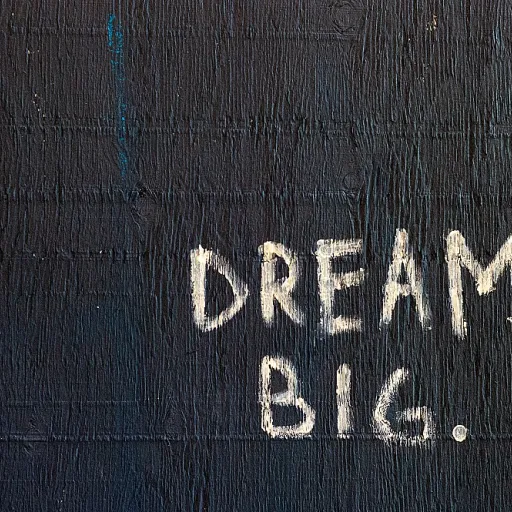
The Importance of Organizational Culture in Succession Planning
The Interconnection of Culture and Succession
In the dynamic world of business, the significance of organizational culture plays a pivotal role in the landscape of succession planning. Organizations that harness the power of culture in shaping their leadership pipelines often see improved outcomes, ensuring continuity and fostering resilience. Practically, this means integrating cultural elements into the processes used in identifying and developing future leaders.
Culture is an undercurrent that influences organizational performance and shapes how teams interact. A well-defined culture inventory can serve as a diagnostic tool in this context. By assessing cultural dimensions according to the Competing Values Framework, organizations can better understand their current culture and its impact on succession dynamics.
From Cultural Assessment to Alignment
To effectively utilize culture in succession planning, an initial cultural assessment is essential. Tools like the Organizational Culture Inventory (OCI) help delineate aspects of a culture, providing insights into how it aligns with organizational objectives and the development of key personnel. This stage involves identifying the current cultural status and examining how it can influence a strategic succession plan.
Guided by Effective Execution
Successful organizations recognize that succession planning shouldn't occur in isolation from cultural insights. Once the cultural framework is clear, the focus can shift towards aligning leadership development efforts with the preferred culture. This alignment ensures that future leaders not only fit within existing structures but also propel cultural change as needed, preparing the organization for transitions.
Indeed, understanding how culture impacts succession planning sheds light on strategies that are not just about filling positions, but enriching the organization’s future trajectory.
Assessing Current Organizational Culture
Evaluating the Existing Cultural Landscape
Understanding the current organizational culture is crucial in planning for leadership succession. The first step in this journey is conducting a thorough cultural assessment using well-regarded instruments, like the Organizational Culture Inventory (OCI). Such a culture inventory assists organizations in identifying the predominant culture types, which directly impact leadership effectiveness and team performance. Organizations need to focus on assessing aspects such as the prevailing values framework, team dynamics, and overall culture change readiness. By leveraging concepts from the competing values framework, businesses can better understand the strengths and weaknesses in their organizational effectiveness. This assessment helps in pinpointing how the current culture might affect or restrict leadership development initiatives. Moreover, it’s essential to reconcile any differences between what the organizational culture is and what it should ideally be. This cultural gap analysis can aid in recognizing specific areas needing improvement, whether related to quality, team synergy, or leadership execution. Studies published in journals like Nursing Administration and others in health care management have shown effective ways of employing cultural assessments to drive organizational performance improvements. For organizations, it’s not just about where they stand culturally at present but also about their strategy for bridging gaps to achieve a preferred culture. Engaging with organizations like Synergistics International can provide invaluable insights into implementing successful culture change strategies. By doing so, organizations not only ensure the development of leaders who align with their cultural objectives but also enhance their competitive edge within the market. For a detailed understanding of cultural assessments and their role in management, explore navigating the complexities of human resources.Aligning Leadership Development with Culture
Leadership Development and Aligning with Culture
In any organization's journey towards effective succession planning, aligning leadership development with the existing culture is a critical component. The organizational culture sets the stage for how leaders are expected to behave, make decisions, and influence the teams they manage. When developing leaders, it's imperative to consider culture inventory assessments, such as the Organizational Culture Inventory (OCI), which serve as vital instruments in understanding the organization's current culture against the preferred future culture.
Organizations often rely on tools to assess cultural dimensions, allowing them to develop leaders who are not only capable but who also embody the organization's values framework. Cultures are diverse, and the culture inventory enables organizations to capture these competing values and align them with leadership programs. For instance, in the healthcare sector, aligning leadership with cultural values ensures the dimensions of care, quality, and ethical standards are preserved throughout the organization's growth.
Furthermore, continuous development programs rooted in cultural assessments, as promoted by Human Synergistics International, support organizations in their quest for improved organizational effectiveness and performance. These assessments delve into cultural types, providing a comprehensive view of the culture change necessary for developing future leaders who can perform effectively within the established corporate culture.
Adapting leadership development to fit the organization’s existing culture while preparing for future culture changes brings a level of flexibility and resilience. It ensures that future leaders are not just equipped with skills but also with an understanding and respect for the cultural nuances that form a key part of the organization's identity. Therefore, incorporating cultural alignment in leadership development not only prepares successors for executive roles but also perpetuates a healthy cultural legacy within the organization.
Identifying Cultural Gaps in Potential Leaders
Spotting Cultural Mismatches in Potential Leaders
In succession planning, conducting a thorough cultural assessment is pivotal. Potential leaders should align with the existing organizational culture, as this harmony is a catalyst for smooth transitions and sustained performance. Here is how organizations can identify cultural gaps in potential leaders:- Deep Dive into Cultural Dimensions: Start by understanding the core dimensions of your organizational culture. Utilize tools like the Organizational Culture Inventory (OCI) to measure and assess the prevailing cultural behaviors and norms. This instrument, developed by Human Synergistics, offers insights into the present and preferred culture types within an organization. By evaluating these dimensions, organizations can discern where potential leaders stand.
- Conducting Comprehensive Culture Assessments: Employ methodologies such as the Competing Values Framework to understand the alignment of organizational values with potential leaders. This framework, developed by Cameron, aids in assessing whether a leader's values align with those of the organization, ensuring a compatible fit for future roles.
- Evaluating Behavioral Attributes: Culture is about observable behaviors. During leader assessments, observe their interactions and how they resonate with the established culture organization or healthcare environment. Do their actions encourage quality and care? Their responses can reveal any cultural discrepancies that might exist.
- Change Management Capabilities: A potential leader's ability to manage and navigate culture change within an organization is critical. Their track record on initiating and driving change without disrupting organizational effectiveness should be assessed rigorously.
- Leveraging Team Performance Data: Analyze team performance data to understand how potential leaders influence the culture around them. This data provides a practical lens to identify whether their leadership approach fosters a healthy culture or if cultural shifts are necessary.
Integrating Culture into Succession Planning Processes
Weaving Culture into Continuity Plans
Incorporating culture into succession planning is not merely an exercise in cultural assessment; it's about embedding the very essence of the organization into future leadership. When leaders are deeply aligned with the prevailing organizational culture, they can propel the team forward and maintain consistency in the face of change.
This process often begins with a comprehensive assessment of the current culture, utilizing tools such as the Organizational Culture Inventory (OCI) to gauge the prevalent values and beliefs within the company. This inventory allows organizations to identify areas where leadership development intersects with cultural needs and highlights how competing values might influence organizational effectiveness.
Successfully integrating culture into succession planning involves a few critical steps:
- Cultural Alignment: Begin by ensuring that leadership development programs incorporate the core cultural dimensions identified in the cultural assessment. Encouraging potential leaders to embody these foundational values leads to a seamless transition.
- Human Synergistics Approaches: Consider employing methodologies like Human Synergistics to understand culture types and organizational dynamics better. Their instruments can provide an in-depth look into competing values and the desired cultural outcomes.
- Continuous Cultural Assessment: Periodically review and assess the culture to align it with the current and future needs of the organization. Organizations in sectors like health care and nursing administration find particular value in adapting their succession planning to the evolving cultural landscape in order to meet the high standards of care and quality performance.
- Organizational Change and Adaptation: As organizations evolve, the cultural inventory should reflect this growth, ensuring that leadership candidates are prepared for any shifts in the organizational landscape.
Incorporating culture into the processes ensures not only consistency in leadership but also in maintaining the quality and performance standards that define the organization. A deliberate integration of culture into succession planning helps bridge gaps identified in potential leaders, ultimately creating a robust and culturally cohesive leadership pipeline.
Case Studies: Successful Succession Planning with Cultural Alignment
Examples of Achieving Success Through Cultural Alignment
To illustrate the impact of organizational culture on succession planning, several case studies highlight successful integration of cultural dimensions and leadership development. These examples demonstrate how effectively aligning corporate culture can yield remarkable results in leadership transitions.
One health care organization underwent a significant transformation by incorporating organizational culture inventory (OCI) into its succession process. By assessing their current culture and identifying the cultural gaps in potential leaders, the organization harnessed the power of its existing organizational culture to drive meaningful change and align leadership competencies with organizational objectives. This proactive approach enabled the organization to foster a leadership team that truly resonated with its core values, consequently enhancing overall organizational effectiveness.
Another notable example can be found in organizations that have successfully applied the competing values framework. By evaluating and understanding the different culture types using comprehensive cultural assessments, these organizations were able to ascertain the critical qualities for future leaders to possess, ensuring they align with the desired preferred culture. This alignment is paramount, as it contributes significantly to improved team performance and organizational resilience.
Ultimately, these examples underscore the necessity of continuous culture assessment and intentional development of leadership candidates. By doing so, organizations can adeptly navigate the challenges of succession planning, ensuring that leaders are not only skilled but also deeply attuned to the organizational ethos, thereby guaranteeing a seamless "passing of the torch." These case studies offer a roadmap for organizations seeking to reinforce their succession planning processes with robust cultural alignment strategies.












